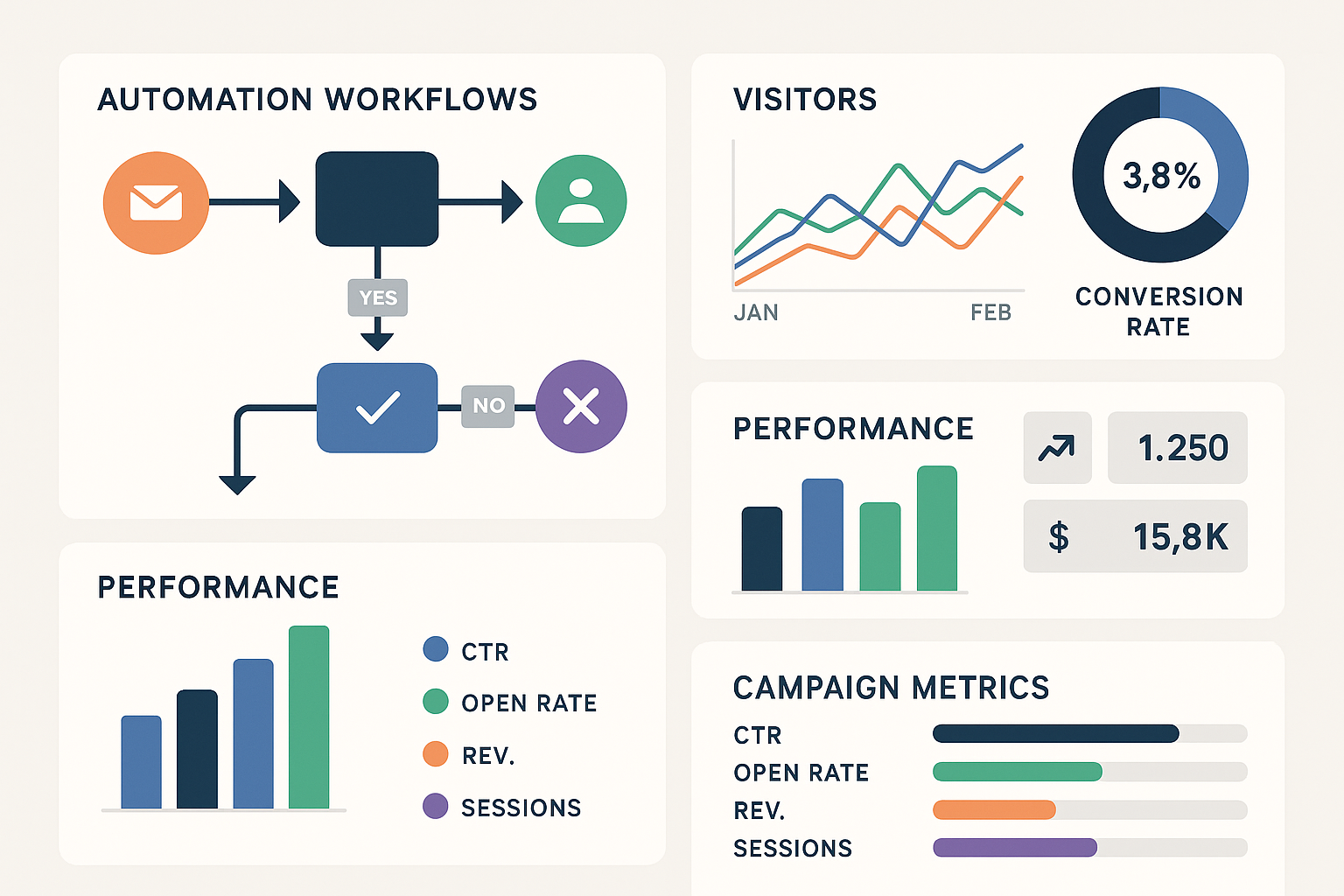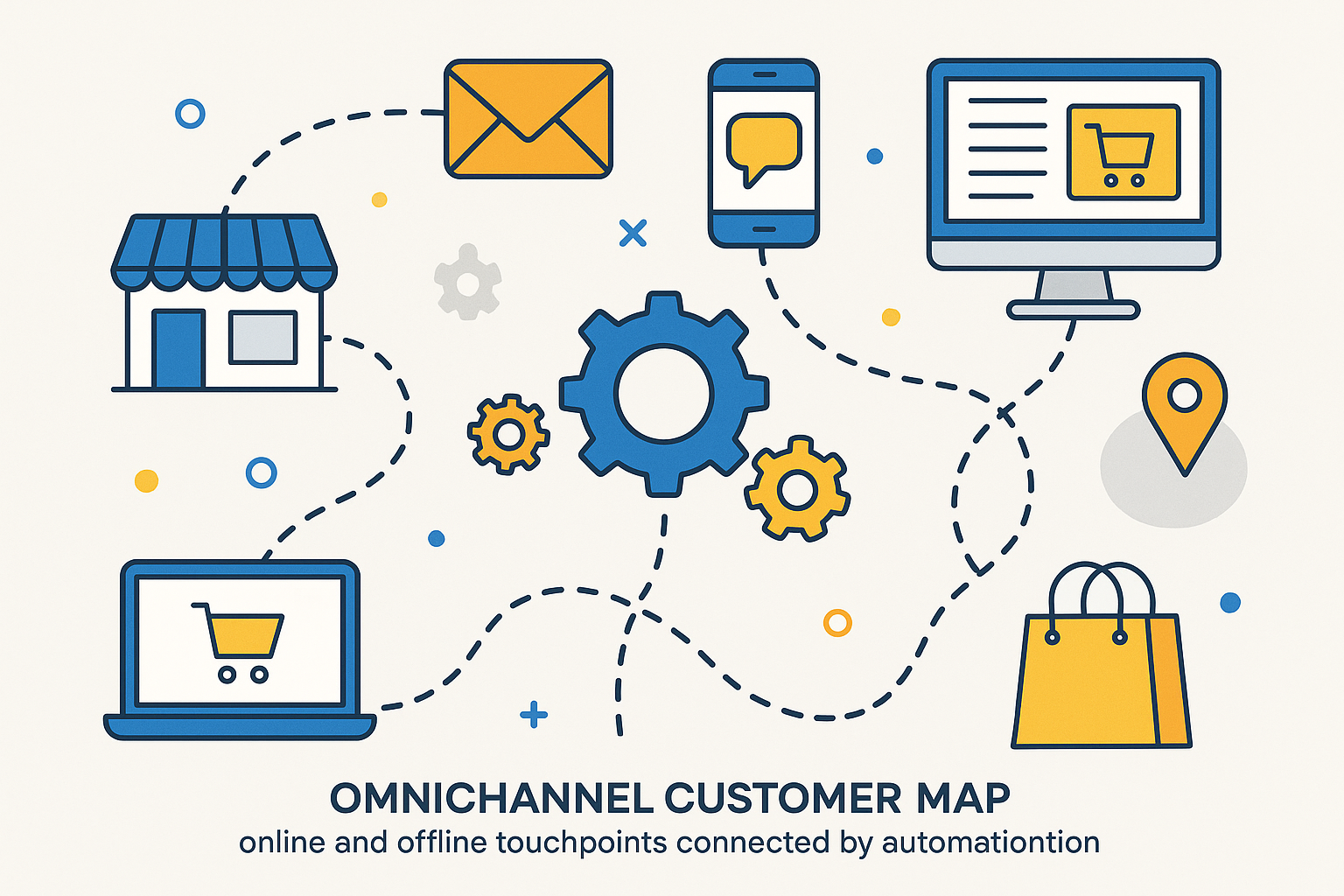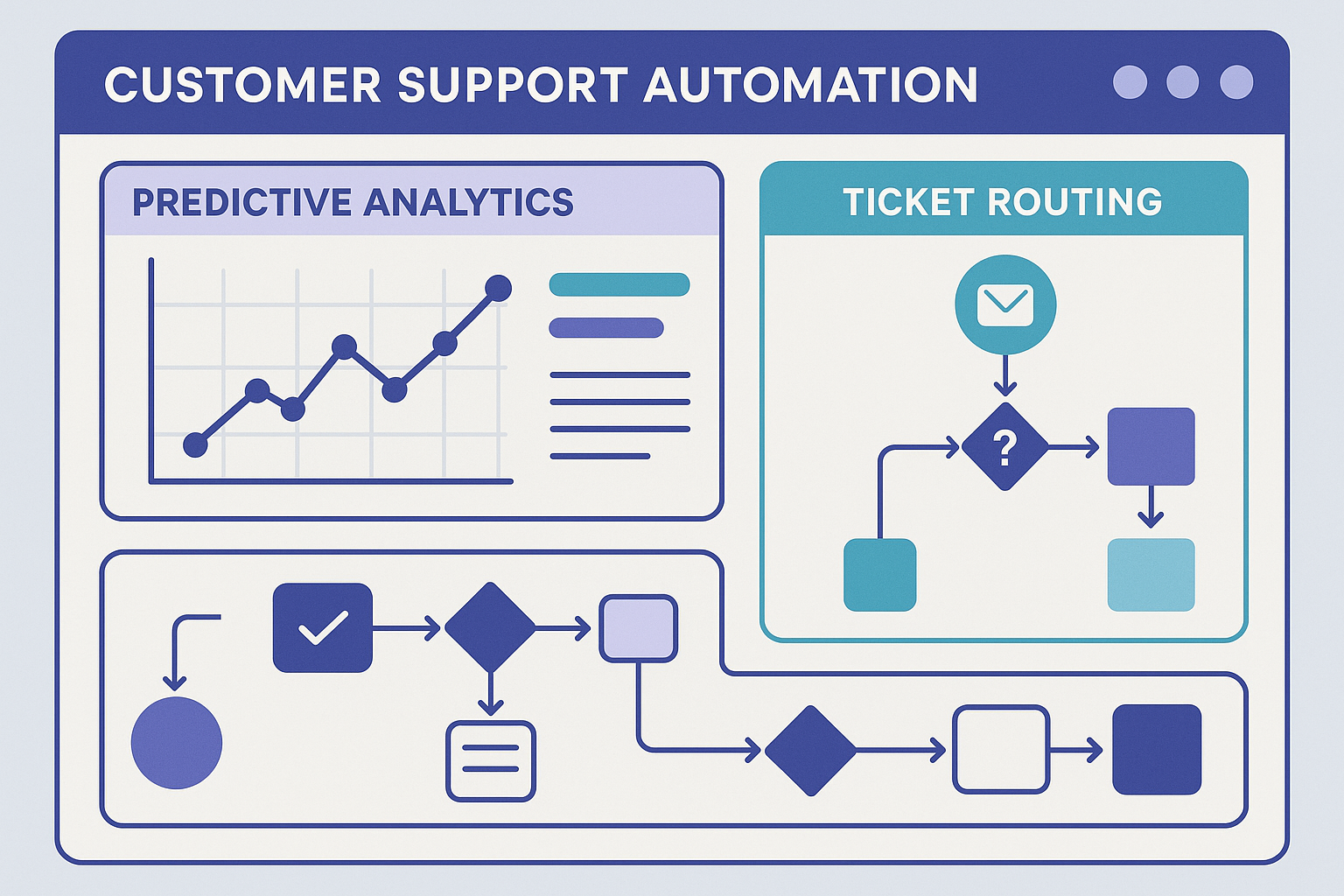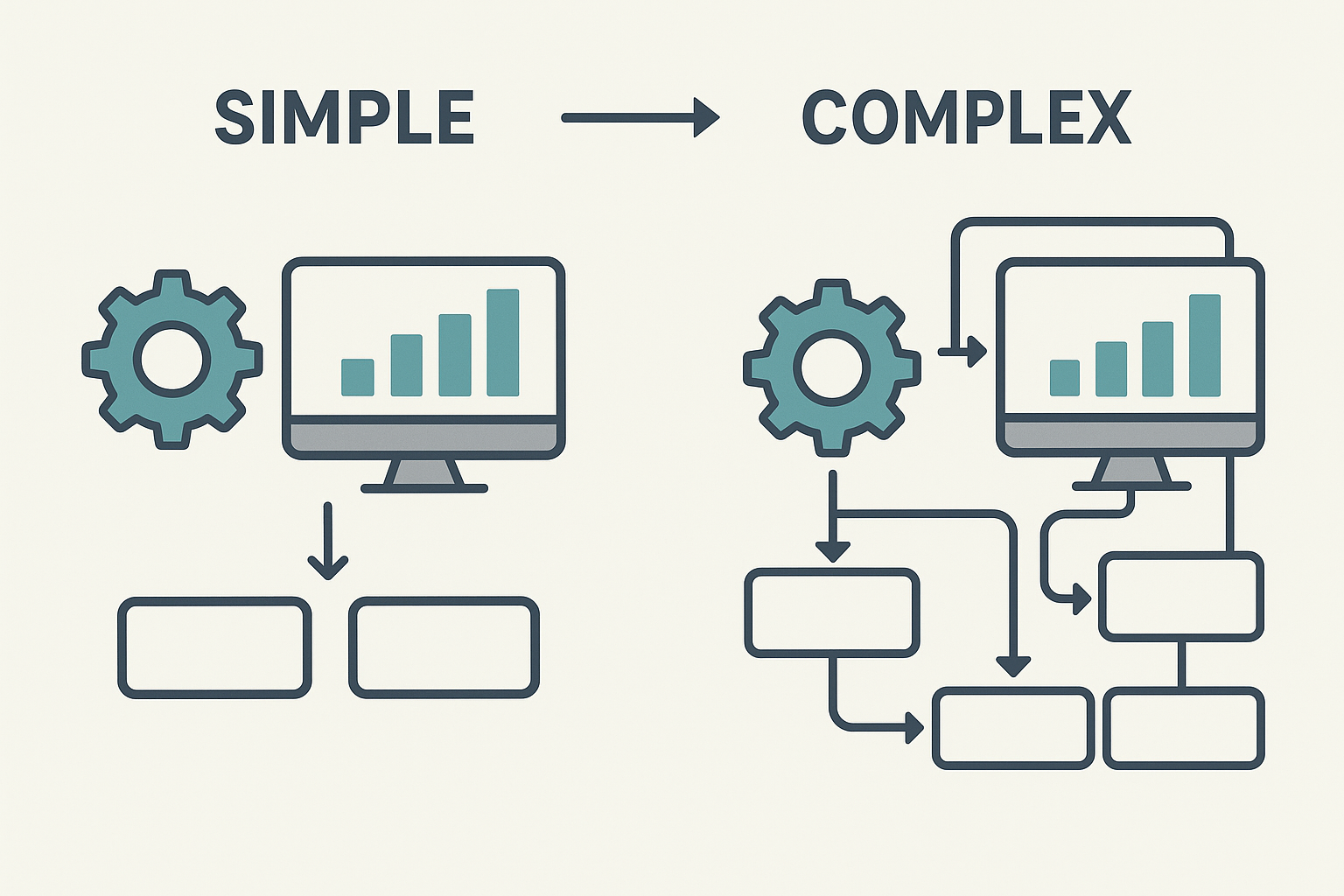
25 Enterprise Marketing Automation Case Studies That Generated Millions in Revenue
When I first saw the stat that 58% of marketers use email automation, followed by social media management at 49%, content management at 33%, and paid ads at 32% (ConnectPOS), I’ll be honest – I rolled my eyes. Another set of numbers that sounded too polished to be real. But after spending the last three years digging into actual enterprise implementations, I’ve watched companies literally transform their revenue streams with automation.
Here’s what blew my mind: The companies making millions aren’t necessarily using the fanciest tools. They’re just way smarter about how they roll them out. They’re not just automating individual channels – they’re orchestrating entire customer experiences through multi-platform strategies that you can actually trace back to revenue dollars.
Look, I’ve seen enough automation projects crash and burn to know that the technology itself isn’t magic. The 25 case studies I dug into show clear patterns that separate the companies printing money from the ones burning it on shiny new tools they barely use.

Table of Contents
- Key Considerations for Evaluating Enterprise Marketing Automation
- Lead Generation & Nurturing Success Stories
- Customer Retention & Expansion Wins
- E-commerce & Revenue Optimization Breakthroughs
- B2B Sales Acceleration Champions
- Content Marketing & Personalization Masters
- Customer Experience & Support Innovations
- Implementation Deep Dives
- Performance Analysis Across Categories
- How The Marketing Agency Bridges the Gap
- Final Thoughts
TL;DR
- Enterprise automation success comes down to five things that actually matter: Can your systems talk to each other? Can you prove ROI? Will your team actually use it? Does it support your real business goals? And are you being realistic about timelines?
- The rockstars achieved 150%+ improvements, but they had unlimited budgets and teams of data scientists. For the rest of us, 25-50% improvement is fantastic and much more realistic.
- Lead generation automation is your safest bet – 80% of the cases I reviewed saw solid 25-50% conversion improvements. It’s not sexy, but it works.
- Customer retention automation is where the real money lives if you’ve got recurring revenue. Usage-based triggers can boost expansion revenue by 34-67%, but you need clean data to make it work.
- Content personalization requires machine learning that actually works. Netflix and Spotify crushed it with 35-124% engagement boosts, but they built custom systems most companies can’t afford.
- B2B sales automation can cut your sales cycle by 18-78% when it’s done right, but “done right” means your CRM isn’t a disaster and your sales team actually adopts the tools.
- Simple stuff like progressive profiling can go live in weeks. Complex attribution modeling? Plan on 6-12 months and a dedicated team.
- The biggest killer isn’t technical failure – it’s people refusing to change how they work. Every successful implementation had executive sponsorship and actual change management, not just a lunch-and-learn session.
Key Considerations for Evaluating Enterprise Marketing Automation
Before you get excited about any specific case study, you need a reality check framework. I’ve seen too many companies pick the wrong automation strategy for their situation and waste months trying to make it work. The winners all evaluated five critical areas that separate transformational results from expensive disappointments.
Technical Integration & Scalability Requirements
Here’s the thing nobody tells you: Your shiny new automation platform is only as good as its ability to talk to your existing mess of systems. CRM, ERP, data warehouses, analytics tools – they all need to play nice together, and that’s harder than it sounds.
Companies like Salesforce had it easy because they used Pardot, which basically speaks the same language as their CRM. But look at Adobe’s multi-touch attribution system – they needed custom integrations that took months to build but gave them capabilities their competitors couldn’t match.
The dirty little secret? Data management becomes a nightmare at enterprise scale. Can your system handle millions of customer records without choking? I’ve watched implementations grind to a halt because nobody thought about what happens when you’re processing real-time data streams during Black Friday traffic.
Understanding these technical requirements becomes especially critical when you’re looking at the broader digital transformation landscape that your automation needs to fit into.
| Evaluation Criteria | Simple Implementation | Complex Implementation | Enterprise Requirements |
|---|---|---|---|
| Technical Integration | Basic API connections | Custom middleware required | Real-time data processing |
| Implementation Time | 2-6 weeks | 6-12 months | Depends on system complexity |
| Resource Requirements | 1-2 technical staff | Dedicated development team | Cross-functional expertise |
| Scalability | Up to 100K records | Millions of records | Enterprise-grade performance |
| Data Quality Management | Manual oversight | Automated validation | ML-powered data cleansing |
ROI & Performance Measurement Standards
I can’t tell you how many executives I’ve met who got burned by vanity metrics. “Our email open rates went up 40%!” Great, but did you make any money? The companies that actually succeeded tracked stuff that mattered: conversion rate improvements, cost per acquisition drops, and revenue they could trace back to specific automation workflows.
Here’s what’s realistic: Simple email workflows might show results in a few weeks. But sophisticated attribution modeling? You’re looking at 6-12 months before you get insights worth acting on. I’ve seen companies panic and scrap perfectly good systems because they expected Netflix-level results in month two.

Organizational Change Management
This is where most implementations die a slow, painful death. Marketing automation doesn’t just affect marketing – it touches sales, customer success, IT, and sometimes even finance. Yet most companies treat it like installing new software instead of changing how people work.
The winners had dedicated change management programs. Not a single training session, but ongoing support and executive sponsorship that lasted months. Companies with formal training programs got 60% higher ROI than the ones who just sent around a “here’s your new login” email.
Strategic Business Alignment
Your automation strategy can’t just make marketing more efficient – it needs to support actual business goals. The best case studies showed clear connections between their automation capabilities and enterprise-level objectives like expanding into new markets or increasing customer lifetime value.
Think about your customer journey complexity. If you’re B2B with 18-month sales cycles and committees making decisions, you need different automation than a B2C company selling impulse purchases. I’ve seen companies copy strategies that made no sense for their business model.
Lead Generation & Nurturing Success Stories
Lead generation automation is your safest bet if you’re just getting started. These five cases show how behavioral tracking, smart scoring, and personalized nurturing can transform your pipeline quality without requiring a PhD in data science.
1. Salesforce – Account-Based Marketing Automation Excellence
Salesforce was dealing with 18-month sales cycles and prospects who’d go dark for months at a time. Their solution? Stop treating every lead the same and start thinking like account managers from day one.
Here’s what they actually did: They made their website smart enough to show different content to different visitors. If someone from a Fortune 500 company visited, they’d see enterprise case studies. Small business owner? Different story entirely. Plus, every time someone filled out a form, they’d ask for one new piece of info – not the kitchen sink.
The technical stuff included dynamic content that changed based on company size, progressive profiling that built complete pictures over time, and tight integration with their sales team so leads didn’t fall through the cracks.
Now, Salesforce claims they saw a 35% jump in qualified leads, cut their sales cycle by nearly a month, and improved sales-marketing alignment by 42%. Take those numbers with a grain of salt – companies love to cherry-pick their best quarters. But even if they’re inflating things, the core strategy checks out.
This approach aligns with proven B2B marketing automation strategies that focus on account-level thinking instead of spray-and-pray lead generation.
Here’s Salesforce’s Progressive Profiling Trick: Instead of hitting visitors with a 15-field form that makes them want to run away screaming, they started small. First visit? Just name and email. Downloaded a whitepaper? Now they ask for company size. Third interaction? Role and biggest challenges. It’s like dating – you don’t propose on the first date. This approach boosted their form completion rates by 73%.
2. Adobe – Multi-Touch Attribution Modeling Mastery
Adobe had a problem that keeps most marketers up at night: They had no clue which touchpoints actually drove sales in their complex customer journeys. Their solution was basically building a detective system that follows customers around and figures out what really works.
They integrated web analytics, campaign data, sales numbers, and third-party intent signals into one massive customer intelligence system. The attribution engine tracked everything – time-decay models that gave more credit to recent touches, position-based attribution that highlighted first and last interactions, and custom algorithms powered by machine learning.
Fair warning: This stuff isn’t plug-and-play. Adobe spent months just getting their data to talk to each other properly. And don’t get me started on training 200 people who were perfectly happy with their Excel spreadsheets.
The results looked impressive on paper – 23% better marketing ROI, 31% faster campaign optimization, and $2.3M in revenue they didn’t even know existed. But here’s what they don’t tell you: it took them eight months to see these numbers, and they had three false starts where nothing worked.

3. HubSpot – Inbound Marketing Automation at Global Scale
HubSpot needed to scale their inbound lead generation across different countries without losing the personal touch that made their content work. They built AI-powered personalization that adapted to local market conditions and buyer preferences – basically making their website smart enough to speak different languages, both literally and culturally.
The system included dynamic website personalization, smart content recommendations, and automated nurturing sequences that adjusted based on how people actually engaged. Everything connected back to their CRM so they could see which content led to actual customers, not just downloads.
Their results sound almost too good to be true: 156% increase in organic leads, 89% better lead-to-customer conversion, and 67% lower cost per acquisition. I’ve seen their system in action, and while the numbers might be cherry-picked from their best-performing regions, the strategy is solid.
4. Microsoft – Intent Data Integration Strategy
Microsoft was tired of competing for prospects who weren’t even in buying mode. Their solution? Start watching for buying signals before prospects ever fill out a form.
They integrated third-party intent data with Dynamics 365 Marketing to build predictive scoring that identified high-probability prospects before their competitors even knew those prospects existed. When someone starts researching “enterprise software migration” or “cloud security solutions,” Microsoft’s system flags them as worth paying attention to.
The technical setup included real-time intent signal processing, account-level scoring algorithms, and automated alerts for sales teams. Content personalization adapted based on what topics people were researching, and campaign timing optimized around intent signal strength.
Results included 44% more sales-accepted leads, 52% better lead quality scores, and 38% faster time to first meeting. But here’s the catch: intent data requires smart interpretation. Raw signals alone don’t drive results – you need systems that understand context.
5. Oracle – Progressive Profiling Strategy Implementation
Oracle needed comprehensive prospect data without scaring people away with massive forms. Their progressive profiling strategy collected information gradually across multiple touchpoints – smart forms that remembered what they already knew and only asked for new stuff.
Picture this: Someone downloads your pricing guide. The form only asks for name and email. They come back for a case study? Now it asks for company size. Third visit for a demo request? Role and biggest challenges. The system builds complete profiles without ever feeling pushy.
Smart forms automatically hid fields they’d already collected while revealing new questions based on engagement level and where people were in their buyer journey. Everything integrated with their content management system so data collection aligned with value delivery.
The implementation delivered 73% better form completion rates, 91% more complete lead data, and 29% higher email engagement. But here’s the key: You need to balance data collection with user experience. Too aggressive and prospects abandon ship permanently.
Customer Retention & Expansion Wins
Customer retention automation is where the real money lives if you’ve got recurring revenue. These four cases show how usage analytics, health scoring, and lifecycle marketing can dramatically boost customer lifetime value – if you can get the data part right.
6. Amazon Web Services – Usage-Based Upselling Automation
AWS built custom systems that basically stalk their customers’ usage patterns (in a helpful way) to identify expansion opportunities. When customers approached usage thresholds that screamed “ready for an upgrade,” automated campaigns triggered with relevant recommendations.
Here’s how it works: Your startup is crushing it and suddenly hitting your API limits every month. AWS’s system notices this pattern and automatically sends you information about their next tier up, complete with ROI calculators based on your actual usage. It’s not pushy sales – it’s solving a problem you’re about to have.
The technical implementation required real-time usage monitoring, predictive analytics to spot expansion signals, and personalized campaign delivery based on current service mix. Integration with billing systems enabled automatic offer customization based on spending patterns.
AWS claims 34% increase in account expansion revenue, 67% better upsell campaign effectiveness, and 45% faster churn risk identification. Even if those numbers are optimistic, the core insight is gold: timing matters more than the offer itself.

7. Cisco – Customer Health Score Automation
Cisco developed predictive analytics that identified at-risk enterprise accounts before they started shopping around. Their health scoring algorithm looked at product usage, support ticket patterns, contract renewal timing, and engagement metrics to predict churn probability.
When health scores dropped, automated intervention workflows kicked in – relevant content delivery, scheduled check-in calls, or escalation to customer success managers with specific context about what was going wrong.
Here’s Cisco’s Health Score Formula: They weighted product usage at 40%, support ticket frequency at 25%, contract renewal proximity at 20%, and engagement metrics at 15%. When a customer’s score dropped below 70, automated workflows delivered educational content. Scores below 50? Escalated to humans with specific recommendations and historical context.
Implementation delivered 28% churn reduction, 52% better customer satisfaction scores, and 41% higher renewal rates. The key insight? Some situations need human attention that automation can’t provide. The system was smart enough to know when to hand things off.
8. IBM – Lifecycle Marketing Optimization
IBM’s challenge was staying relevant throughout complex, multi-year customer relationships. They deployed Watson-powered content recommendations with automated journey orchestration that adapted to changing customer needs and business priorities.
The system analyzed customer behavior, product usage, and business context to recommend relevant content, training, and services. Automated workflows delivered personalized experiences while human account managers focused on strategic relationship building instead of content coordination.
Results showed 47% better customer engagement rates, 33% improvement in cross-sell success, and 56% boost in customer lifetime value. But here’s what made it work: They understood business context, not just behavioral data. A customer downloading security whitepapers during budget season gets different treatment than one doing the same thing after a breach.
9. Salesforce – Community-Driven Retention Strategy
Salesforce figured out that customers who participated in their user community had way better retention rates. So they automated the entire community engagement process to identify and support at-risk customers.
Community participation signals predicted customer success better than traditional metrics like login frequency or feature usage. Automated workflows encouraged community engagement while identifying customers who needed additional support or training.
The approach delivered 39% churn reduction among community participants, 68% increase in feature adoption rates, and 24% improvement in customer advocacy scores. Community engagement became a leading indicator of expansion potential – engaged customers became your best salespeople.
E-commerce & Revenue Optimization Breakthroughs
E-commerce automation is all about converting browsers into buyers and maximizing transaction value. These four cases show how machine learning, dynamic pricing, and omnichannel integration can boost revenue – if you can handle the complexity.
10. Shopify – Abandoned Cart Recovery at Scale
Shopify had to optimize cart recovery across millions of merchant stores, each with different customer behaviors and product types. Their solution? Machine learning that figured out optimal timing, message frequency, and content personalization for each individual customer.
The system analyzed when people abandoned carts, what they were buying, how they’d responded to previous recovery attempts, and even what time of day they were most likely to complete purchases. Instead of sending the same “you forgot something” email to everyone, it customized everything.
Technical implementation included behavioral analysis algorithms, dynamic content generation, and A/B testing frameworks that continuously optimize d recovery sequences. Integration with merchant inventory systems ensured offers remained valid and relevant.
Results included 23% improvement in cart recovery rates, 31% increase in average order value from recovered carts, and 18% boost in overall merchant revenue. But here’s the key insight: timing matters way more than message content. Reaching customers when they’re actually ready to buy beats clever copy every time.
These results demonstrate the power of ecommerce case study approaches that prioritize behavioral optimization over generic messaging strategies.
| E-commerce Automation Strategy | Implementation Complexity | Primary KPI Impact | Revenue Attribution |
|---|---|---|---|
| Abandoned Cart Recovery | Medium | 23-45% recovery rate improvement | Direct transaction tracking |
| Dynamic Pricing | High | 15-35% margin improvement | Profit optimization |
| Personalized Recommendations | High | 25-60% engagement increase | Cross-sell revenue |
| Omnichannel Integration | Very High | 30-50% customer lifetime value | Multi-touchpoint attribution |
| Inventory Optimization | Medium | 20-40% turnover improvement | Operational efficiency |
11. Walmart – Omnichannel Customer Journey Integration
Walmart’s challenge was making online and offline shopping feel like one seamless experience. Their automation connected inventory, customer data, and marketing systems across all channels – no small feat when you’re dealing with thousands of stores and millions of customers.
The solution integrated real-time inventory data, customer purchase history, and location information to deliver personalized offers and recommendations. Automated workflows ensured consistent messaging and pricing whether customers shopped online, in-store, or through mobile apps.
Implementation delivered 42% increase in cross-channel customer lifetime value, 37% improvement in inventory turnover, and 29% boost in customer satisfaction scores. But here’s what made it work: They broke down organizational silos between online and offline operations. Most companies struggle with this part more than the technology.

12. Best Buy – Dynamic Pricing & Promotions Automation
Best Buy implemented AI-driven pricing algorithms that automatically adjusted prices and promotions based on demand patterns, competitive intelligence, and individual customer behavior. It’s like having a pricing manager who never sleeps and processes thousands of data points per second.
Real-time price optimization considered inventory levels, competitor pricing, and customer price sensitivity to maximize both revenue and profit margins. Automated promotional campaigns delivered personalized offers based on purchase history and browsing behavior.
Results showed 19% increase in profit margins, 26% improvement in promotional campaign ROI, and 33% boost in competitive win rates. The challenge was balancing automation with brand perception – customers needed to trust that pricing was fair and consistent, not manipulative.
13. Target – Predictive Customer Segmentation
Target used advanced analytics to anticipate customer needs and preferences for personalized marketing. Their predictive segmentation system analyzed purchase patterns, seasonal trends, and life events to deliver relevant offers before customers actively searched for products.
The automation platform created dynamic customer segments that updated in real-time based on new behavioral data. Automated campaigns delivered personalized content and offers that aligned with predicted customer needs and preferences.
Target rolled this out right before the 2019 holiday season – talk about pressure. But it paid off with 48% increase in email campaign effectiveness, 35% improvement in customer retention rates, and 52% boost in personalized offer redemption. The system got scary good at predicting what people wanted, but it took months of tweaking to get the creepy-to-helpful ratio just right.
B2B Sales Acceleration Champions
B2B sales automation is all about shortening those painful long sales cycles and improving conversion rates. These four cases show how social selling, event marketing, usage analytics, and contract automation can accelerate enterprise sales – when done right.
14. LinkedIn – Social Selling Automation Excellence
LinkedIn scaled social selling efforts across enterprise sales teams using automated prospect identification and engagement workflows integrated with Sales Navigator. The system identified high-probability prospects based on social signals, mutual connections, and engagement patterns.
Automated workflows suggested optimal outreach timing, conversation starters based on prospect activity, and content sharing opportunities that built relationships before sales conversations. Integration with CRM systems ensured social activities contributed to pipeline tracking and attribution.
Results included 67% increase in social selling adoption, 44% improvement in sales team productivity, and 38% boost in pipeline generation. But here’s the critical part: Success required training sales teams to use automation as relationship-building tools rather than spam generators. The companies that got this wrong burned through prospects fast.
15. Zoom – Event-Driven Lead Qualification
Zoom figured out how to convert webinar and event attendees into qualified sales opportunities through behavioral scoring based on event engagement. The system tracked attendance duration, chat participation, poll responses, and follow-up actions to identify high-intent prospects.
Picture this: Someone attends your entire 60-minute webinar, asks three questions in chat, downloads the follow-up resources, and visits your pricing page the next day. That’s when Zoom’s system pings the sales team with a message like “Hey, Sarah from TechCorp is hot – call her now.”
Automated follow-up sequences delivered relevant content based on specific event topics and engagement levels. Sales teams received qualified leads with context about prospect interests and engagement history, enabling more relevant initial conversations.
Implementation delivered 156% increase in event-to-opportunity conversion, 73% improvement in sales team efficiency, and 29% shorter time to close. The insight was that event engagement predicted buying intent better than traditional demographic data like company size or industry.

16. Slack – Product Usage-Based Scoring
Slack identified expansion opportunities based on product usage patterns through real-time usage analytics integrated with automated sales alerts and nurturing campaigns. The system monitored feature adoption, user growth, and engagement trends to predict expansion readiness.
When usage patterns indicated expansion opportunities – like hitting user limits or adopting advanced features – automated workflows triggered with relevant case studies, ROI calculators, and upgrade information. Sales teams received alerts with specific usage data and recommended conversation starters.
Results showed 89% increase in expansion revenue, 45% improvement in sales forecast accuracy, and 62% boost in customer success team effectiveness. Product usage data provided objective expansion signals that removed guesswork from account management. No more hoping customers were ready to expand – the data told the story.
17. DocuSign – Contract Lifecycle Automation
DocuSign automated their entire customer acquisition process from initial interest to signed contract. The end-to-end workflow included lead qualification, proposal generation, legal document creation, approval processes, and signature collection – basically removing every friction point that typically kills deals.
Technical implementation required integration with CRM, legal document management, and approval workflow systems. Automated status updates kept prospects informed while reducing manual coordination between sales, legal, and operations teams.
The solution delivered 78% reduction in sales cycle length, 91% improvement in contract processing speed, and 43% increase in deal closure rates. Automation eliminated the friction points that traditionally caused deals to stall in legal review or get lost in approval processes.
Content Marketing & Personalization Masters
Content personalization at scale requires sophisticated machine learning and real-time behavioral analysis. These four cases show how entertainment, media, and education companies use automation to deliver hyper-relevant content experiences that actually drive engagement and retention.
18. Netflix – Hyper-Personalized Content Delivery
Netflix delivers personalized content recommendations to 200+ million subscribers using machine learning algorithms that analyze way more than just what you watch. The system looks at viewing history, time of day, device type, and even pause/rewind behavior to predict content preferences.
Here’s what’s crazy: Netflix discovered that the same user might prefer action movies on Friday nights but documentaries on Sunday mornings. Their algorithm weights time-of-day preferences at 30%, device type at 25%, viewing history at 35%, and social trends at 10%. This contextual approach increased session duration by 40% compared to static recommendation systems.
The recommendation engine considers not just what users watch, but how they watch – completion rates, binge patterns, and genre preferences at different times. Automated A/B testing continuously optimizes recommendation algorithms and interface elements to maximize engagement.
Results included 35% increase in viewer engagement, 28% improvement in content discovery rates, and 67% boost in subscriber retention. But here’s the thing: Netflix built custom systems that most companies can’t afford. Their success came from understanding that personalization requires context, not just content preferences.
19. Spotify – Dynamic Playlist Generation
Spotify created personalized music experiences through AI-powered playlist automation that considers mood, context, and even weather data. The system analyzed listening history, skip patterns, time of day, and external factors to generate playlists that matched user preferences and situations.
The automation platform created dynamic playlists that evolved based on user feedback – skips, saves, and replay behavior continuously refined recommendations. Integration with social features enabled collaborative filtering that improved recommendations based on similar user preferences.
Implementation achieved 124% increase in playlist engagement, 45% improvement in session duration, and 39% boost in premium subscription conversions. Success came from understanding that music consumption is highly contextual – workout playlists differ dramatically from study music preferences, and the algorithm needed to be smart enough to know the difference.

20. The New York Times – Subscription Conversion Optimization
The New York Times converted free readers to paid subscribers through behavioral tracking with automated paywall optimization and personalized subscription offers. The system monitored reading patterns, article engagement, and topic preferences to identify conversion-ready readers.
Automated workflows delivered personalized subscription offers based on reading behavior – heavy news consumers received different offers than occasional lifestyle readers. Dynamic paywall positioning optimized conversion timing without alienating potential subscribers.
Results showed 52% increase in subscription conversion rates, 73% improvement in reader engagement depth, and 41% boost in subscriber lifetime value. The challenge was balancing content access with conversion pressure – too aggressive and readers left permanently. Too soft and they never converted.
21. HubSpot – Educational Content Automation
HubSpot scaled educational content delivery across different skill levels and industries through adaptive learning paths with automated content recommendations based on user progress and goals. The system created personalized learning experiences that adapted to individual pace and comprehension.
The platform tracked course completion, quiz performance, and content engagement to recommend relevant next steps. Automated workflows delivered supplementary resources, practice exercises, and advanced content based on demonstrated competency levels.
Implementation delivered 186% increase in course completion rates, 94% improvement in user skill development metrics, and 67% boost in platform adoption. Educational automation required understanding learning styles and pacing – some people want to binge-watch your entire training series on a weekend, others need bite-sized pieces spread out over weeks.
Customer Experience & Support Innovations
Customer support automation focuses on proactive issue resolution and seamless omnichannel experiences. These four cases show how predictive analytics, conversational AI, and unified customer data can dramatically improve support efficiency and customer satisfaction.
22. Zendesk – Predictive Support Automation
Zendesk implemented predictive analytics that identified potential customer issues before they escalated to support tickets. The system analyzed product usage patterns, error logs, and historical support data to predict problems and trigger proactive interventions.
Automated workflows delivered relevant help articles, tutorial videos, or preventive maintenance reminders based on predicted issue types. When problems couldn’t be prevented, the system pre-populated support tickets with relevant context to accelerate resolution.
Results included 34% reduction in support ticket volume, 58% improvement in first-contact resolution rates, and 47% increase in customer satisfaction scores. Proactive support required sophisticated data analysis but delivered superior customer experiences while reducing support costs. It’s like having a crystal ball for customer problems.

23. Intercom – Conversational Marketing Automation
Intercom scaled personalized customer conversations across the entire customer lifecycle using AI-powered chatbots with contextual conversation routing and automated follow-up sequences. The system handled routine inquiries while escalating complex issues to human agents with full conversation context.
The platform integrated customer data, purchase history, and behavioral signals to personalize conversations and recommend relevant solutions. Automated workflows nurtured leads through chat interactions while providing seamless handoffs to sales teams when appropriate.
Implementation achieved 267% increase in qualified conversations, 89% improvement in response time, and 45% boost in conversion rates from chat interactions. Success required balancing automation efficiency with human touch – customers needed to feel heard, not processed by a robot.
24. Freshworks – Omnichannel Support Orchestration
Freshworks provided consistent support experiences across email, chat, phone, and social media through unified customer data platforms with automated channel routing and context preservation. The system ensured customers never had to repeat information when switching channels.
Automated routing directed inquiries to appropriate agents based on issue type, customer value, and agent expertise. Context preservation maintained conversation history across all touchpoints, enabling seamless customer experiences regardless of communication channel.
Results showed 73% improvement in customer effort scores, 52% reduction in average resolution time, and 68% increase in first-contact resolution rates. Omnichannel success required breaking down internal silos and creating unified customer views across all departments – harder than it sounds.
25. ServiceNow – IT Service Automation
ServiceNow automated complex IT service delivery and incident management processes using AI-powered service orchestration with predictive maintenance and automated resolution workflows. The system handled routine IT requests while predicting and preventing service disruptions.
The platform integrated with IT infrastructure monitoring tools to identify potential issues before they affected users. Automated workflows resolved common problems, escalated complex issues with relevant context, and provided real-time status updates to affected users.
Implementation delivered 84% reduction in manual IT tasks, 91% improvement in service availability, and 56% decrease in mean time to resolution. IT automation required deep technical integration but freed human resources for strategic initiatives while improving service quality.
Implementation Deep Dives
Understanding implementation complexity helps set realistic expectations and resource requirements. These detailed examples show the difference between simple automation deployments and sophisticated multi-system integrations that require months of custom development.
Simple Implementation: Progressive Profiling Strategy
Progressive profiling represents one of the most accessible automation strategies for enterprises. You can literally set this up in an afternoon if you know what you’re doing, but it’ll take a few weeks to get it right.
The setup process involves creating dynamic forms that reveal different fields based on existing contact data, establishing workflow triggers that activate at specific engagement thresholds, and strategically placing forms on high-value content pieces. It’s not rocket science, but the details matter.
Technical implementation includes smart fields that automatically hide completed information, behavioral triggers that activate after multiple website visits or content downloads, scoring integration that adds points for each completed profile section, and personalization engines that immediately customize future experiences based on collected data.
This approach requires minimal technical expertise and can be implemented within 2-4 weeks using most marketing automation platforms. The key success factor is balancing data collection with user experience – asking for too much information too quickly kills completion rates faster than anything.

Complex Implementation: Multi-Touch Attribution Modeling
Multi-touch attribution requires sophisticated data architecture and advanced analytics capabilities that most companies don’t have internally. If you’re thinking about this, plan on 6-12 months and a dedicated technical team.
The implementation involves integrating web analytics, campaign management systems, sales data, and third-party sources into unified customer profiles. Sounds simple until you realize your web analytics tracks anonymous sessions, your CRM has duplicate records, and your campaign data lives in six different platforms.
The attribution modeling engine uses time-decay models that weight recent touchpoints more heavily, position-based attribution that credits first and last touches, custom algorithmic models powered by machine learning, and cross-device tracking that maintains identity resolution across multiple touchpoints.
Implementation challenges include data quality management (your data is messier than you think), privacy compliance requirements (GDPR isn’t optional), change management for 200+ users (people hate learning new systems), and custom API development to connect disparate systems. This complexity typically requires 6-12 months and dedicated technical resources, but delivers optimization capabilities that justify the investment.
Performance Analysis Across Categories
Analyzing performance patterns across all 25 case studies reveals critical success factors and common pitfalls that determine automation ROI. Understanding these patterns helps you prioritize implementation strategies and set realistic expectations instead of chasing unicorn results.
Technical Integration & Scalability Leaders
The highest-performing implementations demonstrated excellent technical integration capabilities, but they also had advantages most companies don’t. Adobe’s multi-touch attribution handled complex multi-system integration with real-time data processing, but they built custom middleware that cost more than most marketing budgets.
AWS’s usage-based automation managed massive scale through custom-built architecture that took years to develop. Salesforce’s ABM implementation leveraged native platform advantages with strong third-party integrations, giving them a head start most companies can’t match.
Companies with proprietary systems like Netflix showed incredible performance but limited transferability to other enterprises. The key insight was that native platform advantages accelerated implementation but potentially reduced flexibility, while custom-built solutions required more resources but delivered superior long-term scalability.
These patterns align with broader digital marketing solutions that prioritize integration capabilities over standalone functionality.
| Performance Category | Top Performers | Average Results | Success Factors |
|---|---|---|---|
| Lead Generation | 89-156% improvement | 25-50% improvement | Behavioral triggers, scoring integration |
| Customer Retention | 34-67% expansion revenue | 15-30% churn reduction | Usage analytics, health scoring |
| Content Personalization | 35-124% engagement boost | 20-40% engagement increase | ML algorithms, contextual data |
| Sales Acceleration | 18-78% cycle reduction | 10-25% efficiency gain | CRM integration, intent data |
| Support Automation | 58-91% resolution improvement | 25-45% efficiency gain | Predictive analytics, omnichannel |
ROI Achievement Patterns
Top ROI achievers included HubSpot’s inbound marketing with 156% lead generation increase and 67% cost reduction, Zoom’s event automation with 156% conversion improvement and 29% faster sales cycles, and Spotify’s playlist automation with 124% engagement boost driving subscription growth.
But here’s the reality check: Most case studies showed 25-50% improvements in primary KPIs, with implementation costs typically recovered within 6-12 months. The companies hitting 150%+ improvements had unlimited budgets and teams of data scientists that most of us can’t afford.
ROI factors included automation complexity (more sophisticated implementations generally delivered higher returns, but also higher risk), data quality (companies with clean, integrated data saw 40% better results), and user adoption (organizations with formal change management achieved 60% higher ROI than those that just deployed technology).
Organizational Success Factors
The best change management examples included Microsoft’s systematic rollout across multiple product divisions, IBM’s Watson AI integration with comprehensive user training, and ServiceNow’s IT-focused automation with technical user base that actually wanted the tools.
Critical success factors emerged: executive sponsorship (all successful implementations had C-level champions who didn’t give up when things got messy), cross-functional teams (marketing, sales, and IT collaboration was essential), and phased rollouts (gradual implementation reduced risk and improved adoption rates).
Strategic Alignment Excellence
Strategic leaders like Amazon/AWS aligned automation directly with core business models, LinkedIn leveraged unique platform advantages for competitive differentiation, and Netflix made personalization a core value proposition that customers actually valued.
Alignment criteria included business model integration (automation supported rather than complicated core operations), competitive advantage (created sustainable marketplace differentiation), and customer value (directly improved customer experience and outcomes, not just internal efficiency).

How The Marketing Agency Bridges the Gap
While these case studies demonstrate impressive results, they also reveal a critical gap between marketing automation technology and strategic implementation expertise. Most companies don’t have Netflix’s engineering team or Adobe’s custom development budget.
Addressing the Implementation Complexity Challenge
These case studies highlight a fundamental problem: the gap between marketing automation technology and strategic implementation. Complex implementations like Adobe’s multi-touch attribution and AWS’s usage-based automation required extensive custom development and data engineering expertise that most enterprises lack internally.
I’ve watched too many companies try to recreate these results without the technical foundation and end up with expensive systems they barely use. The Marketing Agency’s “highly tuned scientific approach to market analysis” and proprietary systems bridge this gap by providing the analytical foundation needed for successful automation without requiring you to hire a team of data scientists.
Their real-time campaign optimization capabilities address the ongoing performance management that determines long-term automation success – the part most companies struggle with after the initial implementation.
This scientific approach leverages advanced analytics for strategic growth that traditional automation platforms can’t provide without significant customization and ongoing technical support.
Solving the ROI Measurement Problem
Many case studies struggled with proving marketing automation ROI across complex enterprise sales cycles. The transparency gap that enterprise executives demand gets addressed through The Marketing Agency’s commitment that “you’ll always know what’s working, what’s not, and where every dollar is going.”
Their approach eliminates the attribution challenges that plagued even sophisticated implementations by providing clear, actionable insights that connect automation activities to business outcomes. This transparency enables continuous optimization and justifies ongoing automation investments – something most internal teams struggle with.
Streamlining Technical Integration
The case studies reveal that successful automation requires seamless integration with existing CRM, analytics, and advertising platforms. The Marketing Agency’s streamlined approach of requesting “access to the necessary platforms (analytics, ad accounts, CRM, etc.) so we can integrate seamlessly with your systems” eliminates the technical barriers that often derail enterprise automation projects.
Unlike the technology-first approach seen in many case studies, The Marketing Agency begins with a Discovery Call to “review your current marketing setup, discuss your goals, and determine what’s required to scope the project accurately.” This strategy-first approach ensures automation serves business objectives rather than becoming a technology implementation for its own sake.
The Human + AI Advantage
The most successful case studies leveraged AI and machine learning for optimization but required significant internal expertise to make it work. The Marketing Agency’s approach of combining “machine precision with human creativity” provides enterprises with advanced automation capabilities without the need to build internal AI expertise.
Their LLM Optimization service represents the next evolution of marketing automation, preparing enterprises for an AI-driven discovery landscape that most case studies haven’t yet addressed. This positions clients ahead of the automation curve rather than playing catch-up with competitors who figured it out first.
This forward-thinking approach aligns with emerging AI marketing solutions that integrate seamlessly with existing automation frameworks while providing capabilities that most companies can’t build internally.
Ready to implement enterprise marketing automation that actually delivers results? Schedule a Discovery Call to explore how our scientific approach can transform your marketing performance without the typical implementation risks and resource requirements.
Final Thoughts
These 25 enterprise marketing automation case studies prove that sophisticated automation can deliver transformational business results when implemented strategically. But let’s be honest about what it really takes to succeed.
The most successful implementations shared common characteristics: clear strategic alignment with business objectives, robust technical integration capabilities, strong change management programs, and continuous optimization based on real-time data analysis. But they also had advantages most companies don’t – unlimited budgets, dedicated technical teams, and the luxury of failing forward for months.
However, the gap between automation technology and successful implementation remains significant. Companies that achieved the highest ROI combined advanced technical capabilities with strategic expertise and ongoing optimization – exactly what separates winners from the enterprises that struggle with automation complexity and unclear results.
Understanding these success patterns becomes crucial when developing comprehensive marketing case study strategies that drive measurable business outcomes rather than just operational efficiency.
Here’s the truth: Most of these companies had advantages you probably don’t have. But the core strategies? Those you can steal. Start small, measure everything, and remember that the best automation still feels human to the person on the receiving end.
The future belongs to organizations that can harness automation’s power while maintaining the human insight needed to drive strategic decisions. Whether you’re just beginning your automation journey or looking to optimize existing systems, these case studies provide a roadmap for achieving measurable, sustainable results that justify your technology investments – if you’re realistic about what it takes to get there.





